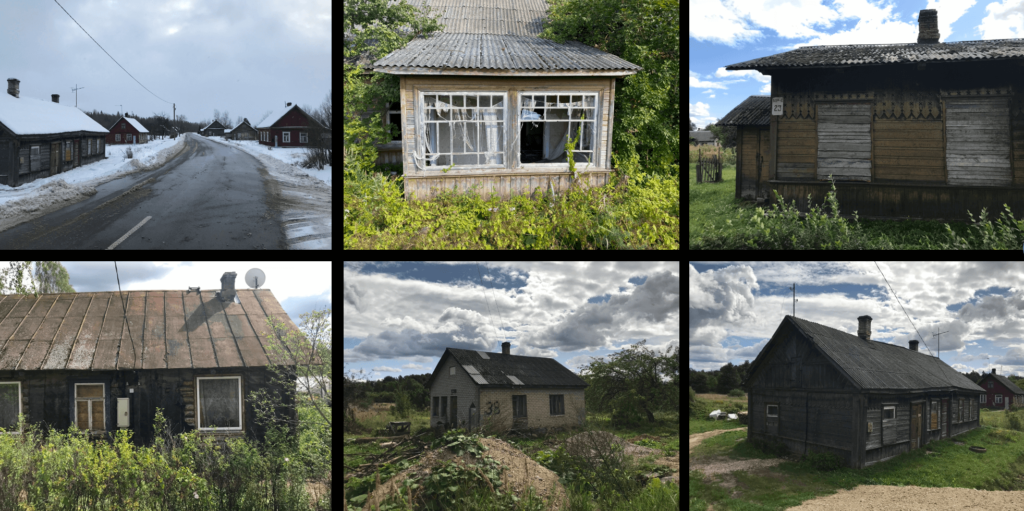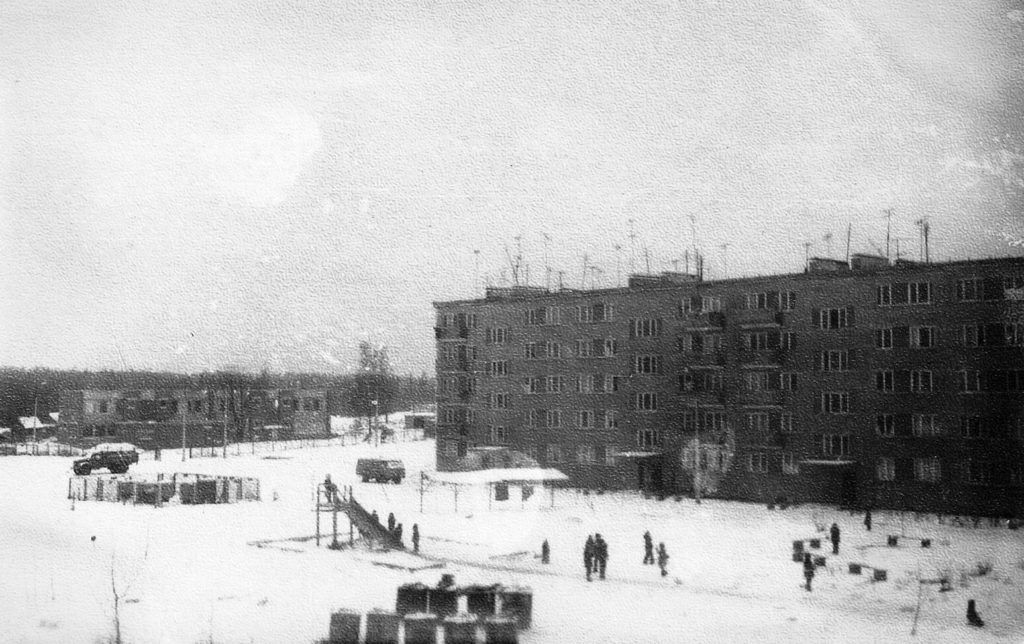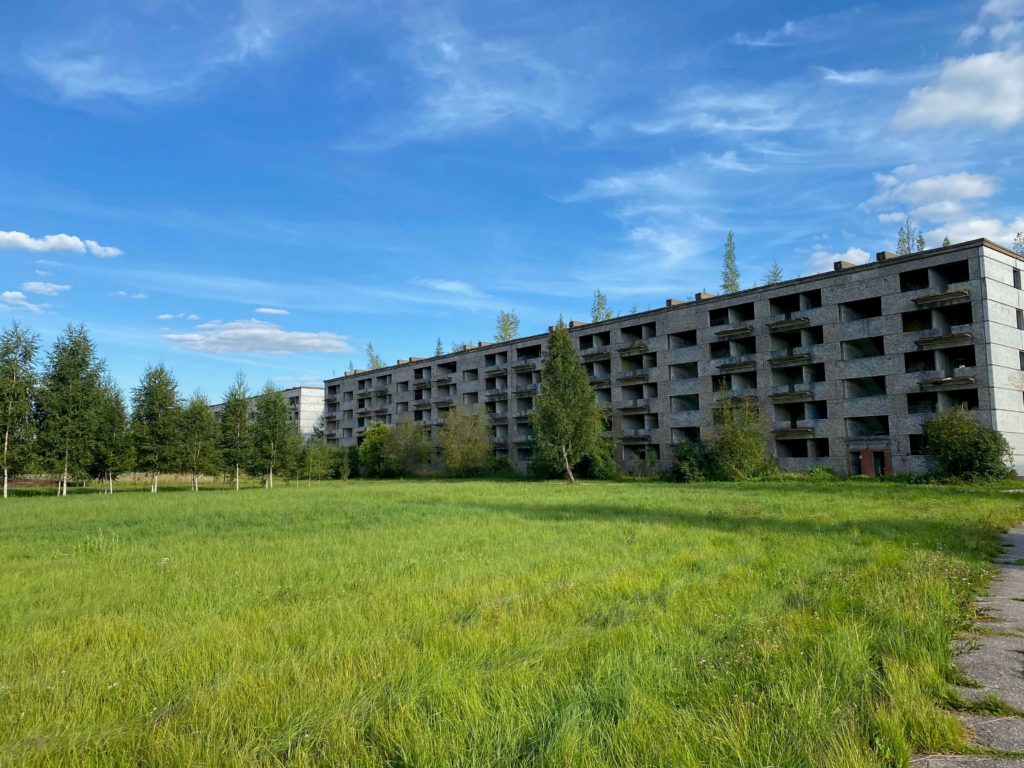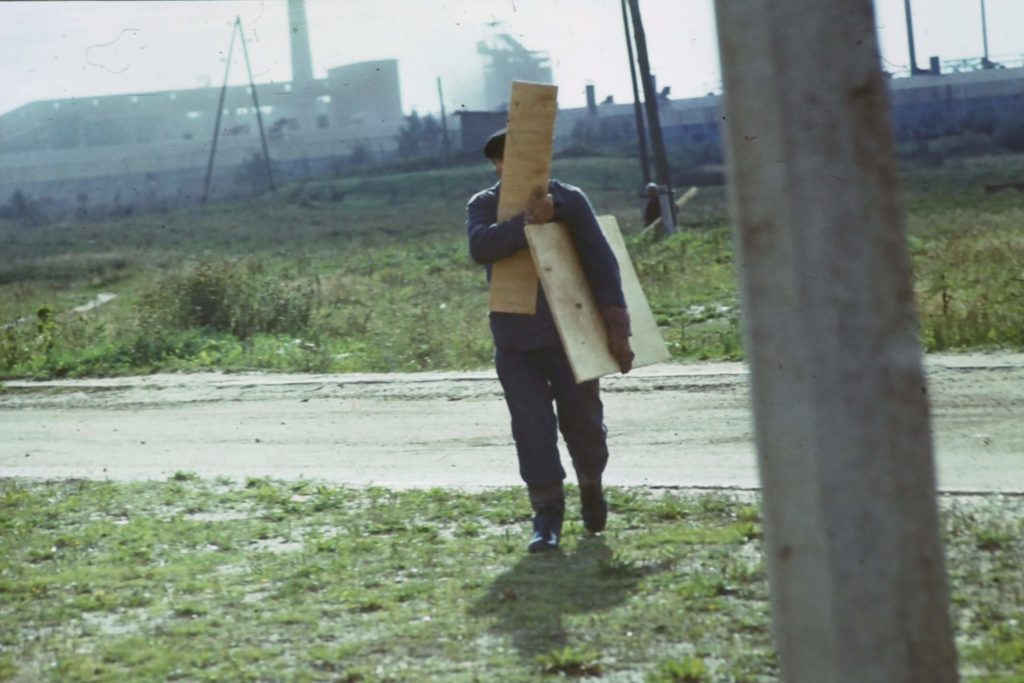Non-property
DOI: 10.60650/EMPTINESS-NZJS-6Z90
In Mazciems[1]Both Lielciems and Mazciems are pseudonyms., a settlement near the Latvia-Russia border, most of the houses that line both sides of the street leading up to the once busy railway station are empty and in various states of decay.

Their last residents are deceased or have left, some for the city, some for Western Europe, and some for Russia. Quite a few of their former homes are now nenoskaidrotas piederības ēkas (literally, buildings of unclear possession) that sit on municipal land. This usually means that the person who lived in the house during the Soviet period had the right to privatize it – that is, obtain legal title – in the post-Soviet period, but did not do so. If the house was built before World War II, the Soviet-era resident could derive the right to privatize it in one of two ways: (1) by inheriting the house from the pre-World War II owner; or (2) by claiming rights to it as the last resident if the pre-World War II owner did not claim it. If the house was built after World War II on land granted by the collective farm or the village soviet, it could be privatized by the last Soviet resident whose rights to the building were registered by Soviet authorities.
There are multiple reasons why the last residents of Mazciems’s decaying “buildings of unclear possession” did not turn their Soviet-era rights into post-Soviet legal titles. They may not have had enough resources, for one had to spend time and money on paperwork and fees. They may have thought that nobody could take the house away from them because nobody else was claiming it. Or, they may have thought of property as a burden rather than an asset insofar as owning a house would have meant incurring taxes and other costs. It is difficult to establish with certainty why these particular buildings were not privatized because their residents are absent (although, I am trying to reconstruct the history of non-privatization at the moment). For the time being, it is possible to map the range of potential reasons based on conversations with people in this and neighbouring municipalities, as well as on the basis of interviews with regional and national land specialists.
The employees of the State Land Service told me that, in the post-Soviet period, many people expected to continue living in the apartments and houses granted to them by the Soviet state and considered them their ‘personal’ property (Verdery 2004: 51), that is, as something they used exclusively and even swapped with other people (Zavisca 2012), but for which the final responsibility lay with the state. Some not only swapped their apartments but also treated them as interchangeable. For example, my interviews with former factory workers in Lielciems, an urban-type settlement an hour’s drive from Mazciems, suggest that people valued the provision of housing and the community that formed in and around apartment buildings rather than individual apartments. The settlement was founded in the 1970s around a newly built factory for making clay-based building materials (there was good quality clay in the area). The factory built six five-storey residential buildings to house workers from all over the Soviet Union. While most of the factory workers left in the early 1990s when the factory closed, the remaining residents recall how quickly they were provided with housing when they arrived in the 1970s, how glad they were about the services (hot water, sanitation, heating) (see also Zavisca 2012), and how friendly everyone was. They enjoyed their apartments, but they did not become attached to them. Many moved apartments – and even buildings – several times either because their family grew or because their original apartment fell into disrepair. Residents were more attached to apartment buildings as an infrastructure for sociality (Humphrey 2003) than to apartments as private or even personal property. I’ve recorded many recollections of neighbourly life enabled by the apartment buildings, but very few commentaries about life in the apartments themselves. It seems that the apartments were mostly valued for their low cost and the services – water and heating – within them.
The apartment buildings were connected to the blood system of the factory insofar as they were heated by the same mazut that was used to fire the ovens of the factory and that was delivered via the railway line that ran through the settlement (see Images 2 and 3)[2]See Humphrey 2003, Collier 2011, and Salaru 2016 for analysis of the afterlives of socialist infrastructure.. Some of the residents did not have to pay for utilities because they were high-level specialists. Others paid highly subsidized prices. The former accountant of the factory estimates that residents paid about one-fifth of the actual costs of maintaining the apartments. She told me that the factory was expected to run social services at a loss and periodically submitted a bill to the state. It is little surprise then that the residents, most of whom came from rural areas or other industrial towns of the Soviet Union, valued the apartments they received for becoming workers. Once the factory closed, the residential buildings were disconnected from its mazut supply and had to be reoriented towards an alternative heating source – wood. The first years were terribly cold, and most of the residents installed individual ovens called burzhuiki (see Image 4). Most importantly, however, it was now the residents themselves who had to pay for the utilities with money they did not have, as they had just lost their jobs in the factory. Those who did not leave right away lived “every year in the building as if it were the last”, the head of the municipality told me. Nobody even thought about privatizing their apartment. It did not make sense to privatize an apartment whose main value had derived from the community and the low price of services when both the community and the services were gone.
Today, four of the six residential buildings have been evacuated and shut down (see Image 5). People have been moved to the remaining two, but even in these buildings many apartments stand empty. The district government uses the empty apartments as their ‘social housing fund’, offering them to ex-prisoners, people below poverty line who apply for social housing, and pensioners. One district official told me they had offered Lielciems to the national government as a place for settling refugees during the 2015 ‘migration crisis’ in Europe, but that idea got lost somewhere in the political corridors. Contrary to the post-World War II period, when Soviet-era newcomers to Latgale were ready to settle houses emptied as a result of Nazi occupation and Soviet deportations, today there is nobody. Even the ex-prisoners, I was told, tend to leave quickly after being given apartments in Lielciems.




What can the residential houses and apartments that stand empty in eastern Latvia’s towns and villages and are in various states of decay add to the literature on postsocialist property, as well as to our project’s understanding of emptiness as a historically specific social formation (Dzenovska 2020)? One of the main contributions to literature on postsocialist property is Katherine Verdery’s (2004) theorization of socialist property as entailing a particular distribution of use rights over means of production and objects of consumption between the state, local administrations, cooperatives, and individuals. Verdery is also the author of the notion of ‘fuzzy property’, which refers to objects – land and buildings – to which multiple actors lay intersecting claims, making it difficult, if not impossible, to fit postsocialist land and buildings into the Western framework of private property. In Verdery’s interpretation (1998: 104), postsocalist fuzziness extends to ambiguous definitions of relationships between people and things, as well as to the lack of routinized rules and practices in relation to property.
In my field sites in eastern Latvia, all or most of the empty residential houses and apartments are accounted for by the state’s inscription devices (Li 2014). Land and buildings are registered in the cadastre where some of them appear as the municipality’s housing stock and others as nenoskaidrotas piederības ēkas (buildings of unclarified possession). The State Land Service (Valsts zemes dienests) periodically sends letters to local authorities informing them which buildings in their jurisdiction are marked as ‘buildings of unclarified possession’ and urging them to do something with them, though they themselves are not exactly sure what that ‘something’ might be.[4]The Latvian cadastre is unusual in the European context, as it includes buildings in addition to land. These buildings are transparent to the state which enacts a certain routine around them – for example, accounts for their continued existence. But the place of the master of the house is empty, and there are no people claiming it. To put it another way, these buildings are ready to become property with the help of the state’s inscription devices (such as the land register), but the social relations that could enliven them as property, capitalist or otherwise, have thinned to the point of disappearance. They are non-property.
If someone wishes to acquire one of these buildings, they would have to spend considerable amount of time and money to track down the last person who had the right to use it and sort out the necessary documentation. This is too cumbersome for the people who might want to live in one of these buildings, as they are likely to be poor and lack the know-how. Those who have the money and the know-how are not interested – or not interested enough – in the buildings or the land beneath them.
If these buildings ever crumble to the point of no return (there are established criteria for designating a building ‘beyond repair’ or ‘non-existent’), the local government could take over and dismantle them. At the moment local governments do not have the resources or motivation to do it. In fact, local governments tend to want to get rid of such buildings if they come into their possession, or make sure they don’t come into their possession at all. For example, a private individual bought one of the now empty Lielciems apartment buildings in the 1990s when the factory’s ‘housing stock’ was given over to the municipality. The man expected housing to become a profitable asset. But his building slowly crumbled along with the others owned by the local government. Now the building stands half-dismantled by its former residents (see Image 6) and cordoned off to prevent children from entering it and injuring themselves. When the local government pushes the owner to do something about the building – to repair it or to dismantle it, the man threatens to give up his title in favour of the local government. This is usually a sufficient deterrent, and things remain as they are.

These buildings are stuck. They are needed by nobody. Their continued existence suggests that the place in which they stand has been expelled from the circuits of capital and, to some extent, the care of the state. For the remaining residents, they are material manifestations of emptiness as a collapsed order without a new order in sight (Dzenovska and Knight 2020). Most find the state of these buildings shameful, but no one seems to know what to do beyond suggesting that politicians are to blame. In addition to being manifestations of emptiness as a condition and a spatial coordinate, these buildings are also literally empty. Yet they are different from the newly built but underused structures in the former Soviet space that indicate a disjuncture between infrastructural projections of wealth and power and social needs (Pelkmans 2003, Bennett 2020). They are also different from the oft-aestheticized ruins of Soviet industrial infrastructure because, rather than reflecting the making and unmaking of the socialist state’s ‘infrastructural power’ (Bennett 2020, Mann 1984), they point to the making and unmaking of the social formations and lives that it enabled (Humphrey 2003). Should these buildings eventually crumble and be declared non-existent or taken down, it is quite possible that the land beneath them will be bought by farmers and cultivated or reforested. This has happened to the land beneath the abandoned farms outside the official boundaries of villages and settlements. The land around farmhouses is more valuable because it consists of larger plots and has historically been cultivated. Today it tends to be used by local farmers who have either bought it or who rent it from former residents or their descendants. Farmhouses are also less likely to be ‘buildings of unclarified possession’ because most of them were built before World War II on private land and have been subject to restitution. Nevertheless, with owners old or deceased, they are no longer needed as residences. The cultivated land comes up to the doorstep (Image 7).

It is not entirely clear whether emptiness in Mazciems and Lielciems is keeping the commodification of land and buildings at bay or whether it is a manifestation of the lack of interest on the part of capital. For the time being, these stuck buildings are material manifestations of emptiness as a space of destruction and possibility, where both exist side by side in a protracted stalemate (Dzenovska and Knight 2020). They are at once illustrations of a collapsed order and material obstacles to a new order of production or consumption.
This is an Open Access article, distributed under the terms of the CC-BY (Creative Commons Attribution 4.0 International) licence, which permits unrestricted re-use, distribution, and reproduction in any medium, provided the original work is properly cited.
Footnotes
| ↑1 | Both Lielciems and Mazciems are pseudonyms. |
|---|---|
| ↑2 | See Humphrey 2003, Collier 2011, and Salaru 2016 for analysis of the afterlives of socialist infrastructure. |
| ↑3 | Kupravskii bomzh is the nickname of a local resident who has been an avid photographer for most of his life. He kindly shared his photo archive with me and allowed me to use his photographs in publications. |
| ↑4 | The Latvian cadastre is unusual in the European context, as it includes buildings in addition to land. |